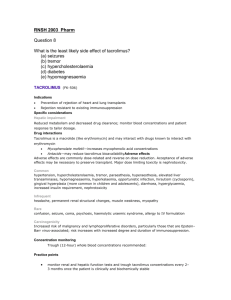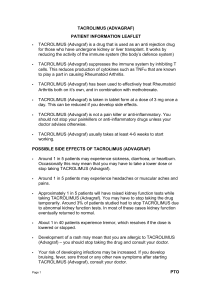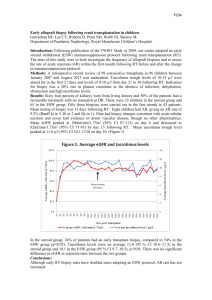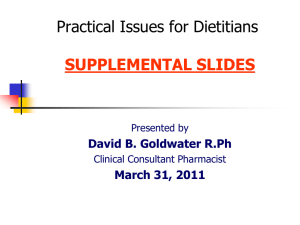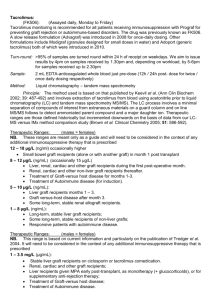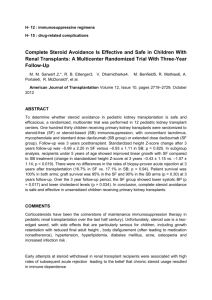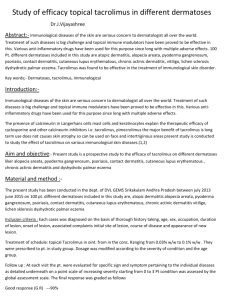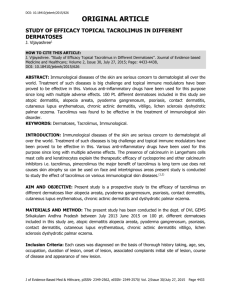Introduction
advertisement
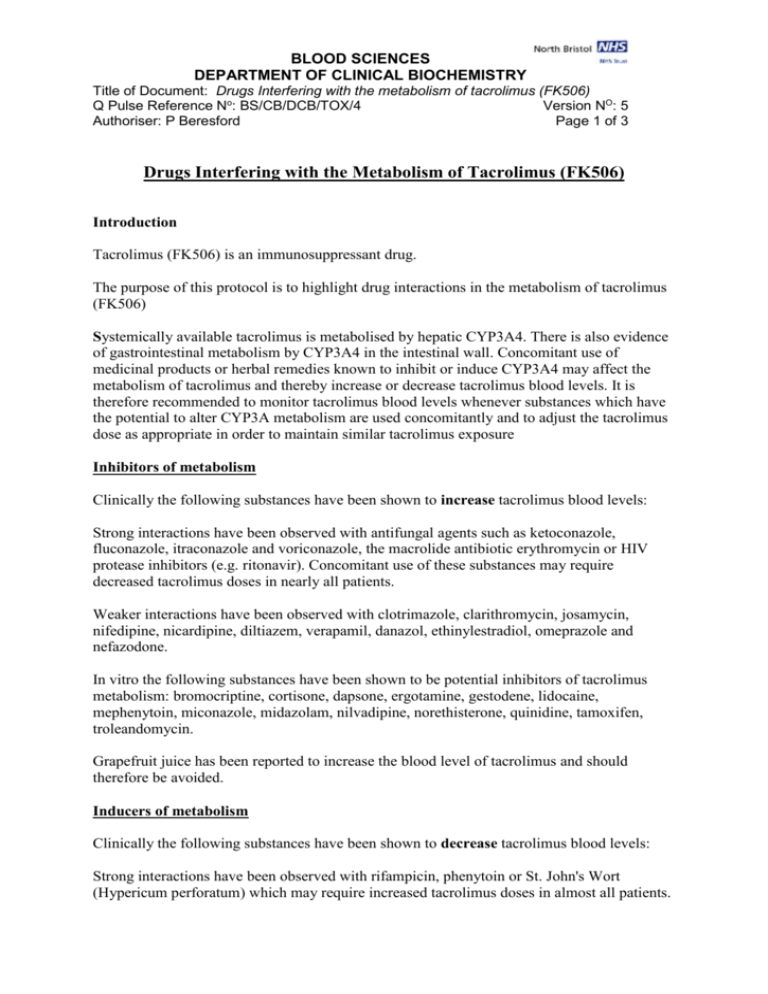
BLOOD SCIENCES DEPARTMENT OF CLINICAL BIOCHEMISTRY Title of Document: Drugs Interfering with the metabolism of tacrolimus (FK506) Q Pulse Reference No: BS/CB/DCB/TOX/4 Version NO: 5 Authoriser: P Beresford Page 1 of 3 Drugs Interfering with the Metabolism of Tacrolimus (FK506) Introduction Tacrolimus (FK506) is an immunosuppressant drug. The purpose of this protocol is to highlight drug interactions in the metabolism of tacrolimus (FK506) Systemically available tacrolimus is metabolised by hepatic CYP3A4. There is also evidence of gastrointestinal metabolism by CYP3A4 in the intestinal wall. Concomitant use of medicinal products or herbal remedies known to inhibit or induce CYP3A4 may affect the metabolism of tacrolimus and thereby increase or decrease tacrolimus blood levels. It is therefore recommended to monitor tacrolimus blood levels whenever substances which have the potential to alter CYP3A metabolism are used concomitantly and to adjust the tacrolimus dose as appropriate in order to maintain similar tacrolimus exposure Inhibitors of metabolism Clinically the following substances have been shown to increase tacrolimus blood levels: Strong interactions have been observed with antifungal agents such as ketoconazole, fluconazole, itraconazole and voriconazole, the macrolide antibiotic erythromycin or HIV protease inhibitors (e.g. ritonavir). Concomitant use of these substances may require decreased tacrolimus doses in nearly all patients. Weaker interactions have been observed with clotrimazole, clarithromycin, josamycin, nifedipine, nicardipine, diltiazem, verapamil, danazol, ethinylestradiol, omeprazole and nefazodone. In vitro the following substances have been shown to be potential inhibitors of tacrolimus metabolism: bromocriptine, cortisone, dapsone, ergotamine, gestodene, lidocaine, mephenytoin, miconazole, midazolam, nilvadipine, norethisterone, quinidine, tamoxifen, troleandomycin. Grapefruit juice has been reported to increase the blood level of tacrolimus and should therefore be avoided. Inducers of metabolism Clinically the following substances have been shown to decrease tacrolimus blood levels: Strong interactions have been observed with rifampicin, phenytoin or St. John's Wort (Hypericum perforatum) which may require increased tacrolimus doses in almost all patients. BLOOD SCIENCES DEPARTMENT OF CLINICAL BIOCHEMISTRY Title of Document: Drugs Interfering with the metabolism of tacrolimus (FK506) Q Pulse Reference No: BS/CB/DCB/TOX/4 Version NO: 5 Authoriser: P Beresford Page 2 of 3 Clinically significant interactions have also been observed with phenobarbital. Maintenance doses of corticosteroids have been shown to reduce tacrolimus blood levels. High dose prednisolone or methylprednisolone administered for the treatment of acute rejection have the potential to increase or decrease tacrolimus blood levels. Carbamazepine, metamizole and isoniazid have the potential to decrease tacrolimus concentrations. Effect of tacrolimus on the metabolism of other medicinal products Tacrolimus is a known CYP3A4 inhibitor; thus concomitant use of tacrolimus with medicinal products known to be metabolised by CYP3A4 may affect the metabolism of such medicinal products. The half-life of ciclosporin is prolonged when tacrolimus is given concomitantly. In addition, synergistic/additive nephrotoxic effects can occur. For these reasons, the combined administration of ciclosporin and tacrolimus is not recommended and care should be taken when administering tacrolimus to patients who have previously received ciclosporin (see sections 4.2 and 4.4). Tacrolimus has been shown to increase the blood level of phenytoin. As tacrolimus may reduce the clearance of steroid-based contraceptives leading to increased hormone exposure, particular care should be exercised when deciding upon contraceptive measures. Limited knowledge of interactions between tacrolimus and statins is available. Available data suggests that the pharmacokinetics of statins are largely unaltered by the co-administration of tacrolimus. Animal data have shown that tacrolimus could potentially decrease the clearance and increase the half-life of pentobarbital and phenazone. Other interactions which have led to clinically detrimental effects Concurrent use of tacrolimus with medicinal products known to have nephrotoxic or neurotoxic effects may increase these effects (e.g., aminoglycosides, gyrase inhibitors, vancomycin, sulfamethoxazole+trimethoprim, NSAIDs, ganciclovir or aciclovir). Enhanced nephrotoxicity has been observed following the administration of amphotericin B and ibuprofen in conjunction with tacrolimus. BLOOD SCIENCES DEPARTMENT OF CLINICAL BIOCHEMISTRY Title of Document: Drugs Interfering with the metabolism of tacrolimus (FK506) Q Pulse Reference No: BS/CB/DCB/TOX/4 Version NO: 5 Authoriser: P Beresford Page 3 of 3 As tacrolimus treatment may be associated with hyperkalaemia, or may increase pre-existing hyperkalaemia, high potassium intake, or potassium-sparing diuretics (e.g., amiloride, triamterene, or spironolactone) should be avoided. Immunosuppressants may affect the response to vaccination and vaccination during treatment with tacrolimus may be less effective. The use of live attenuated vaccines should be avoided. Protein binding considerations Tacrolimus is extensively bound to plasma proteins. Possible interactions with other medicinal products known to have high affinity for plasma proteins should be considered (e.g., NSAIDs, oral anticoagulants, or oral antidiabetics).
